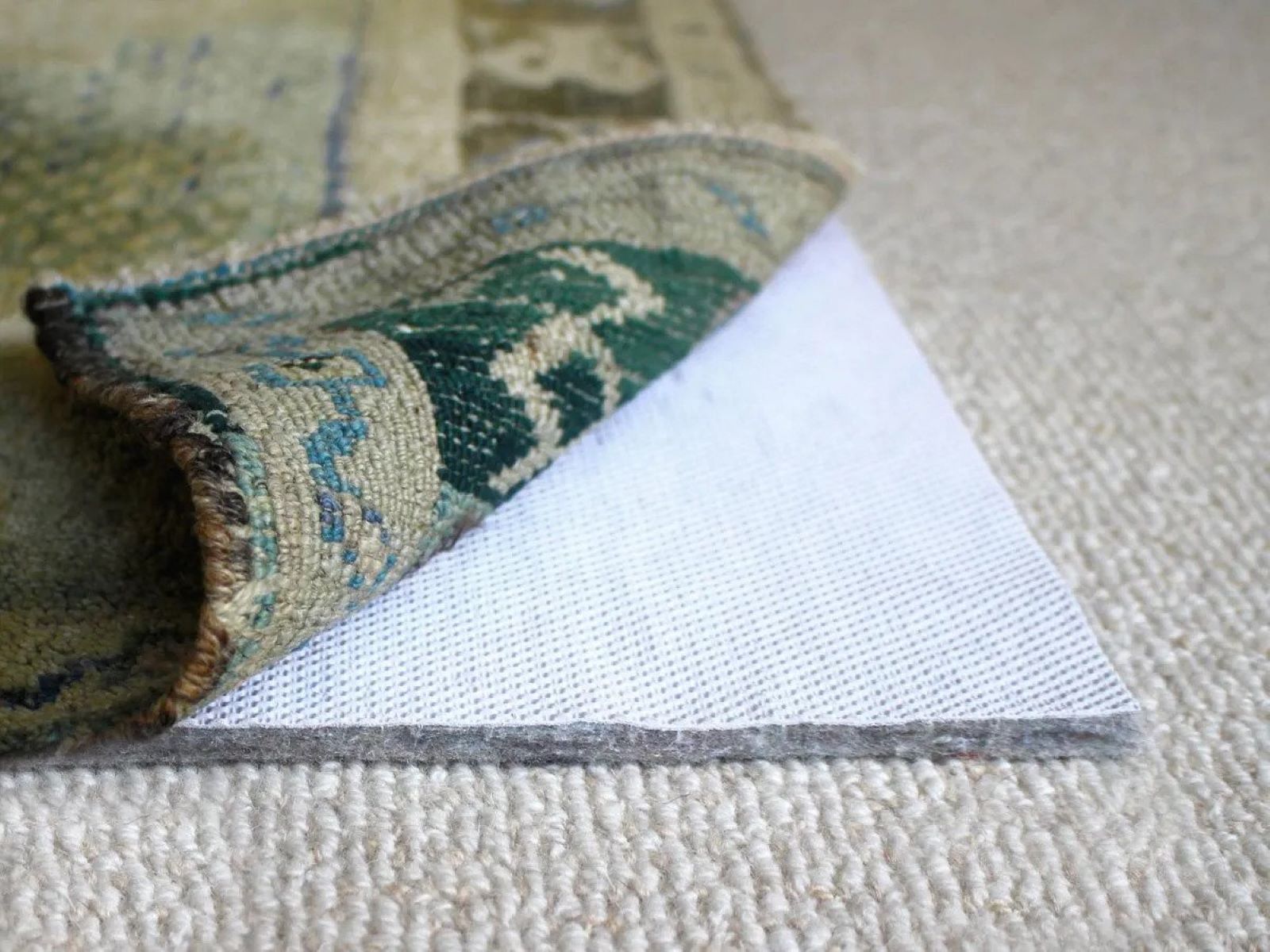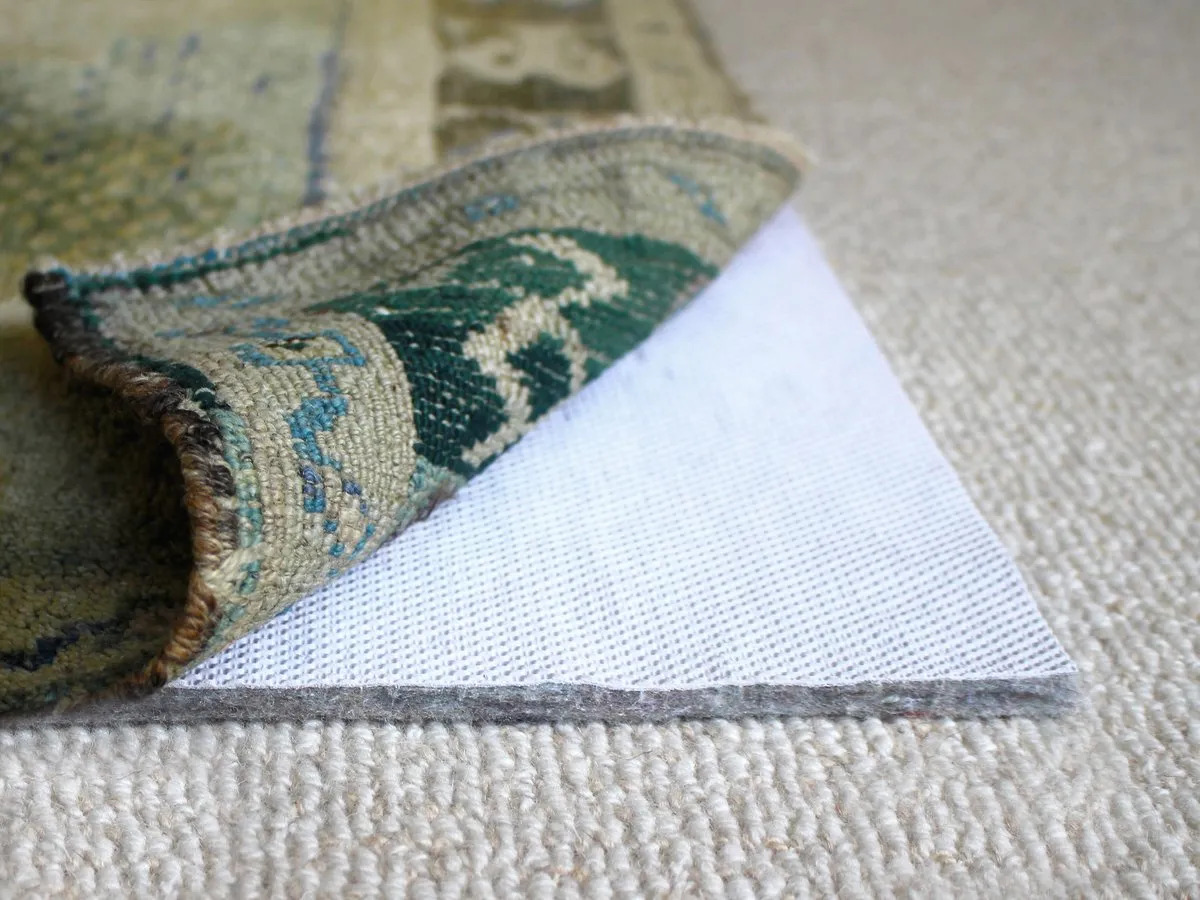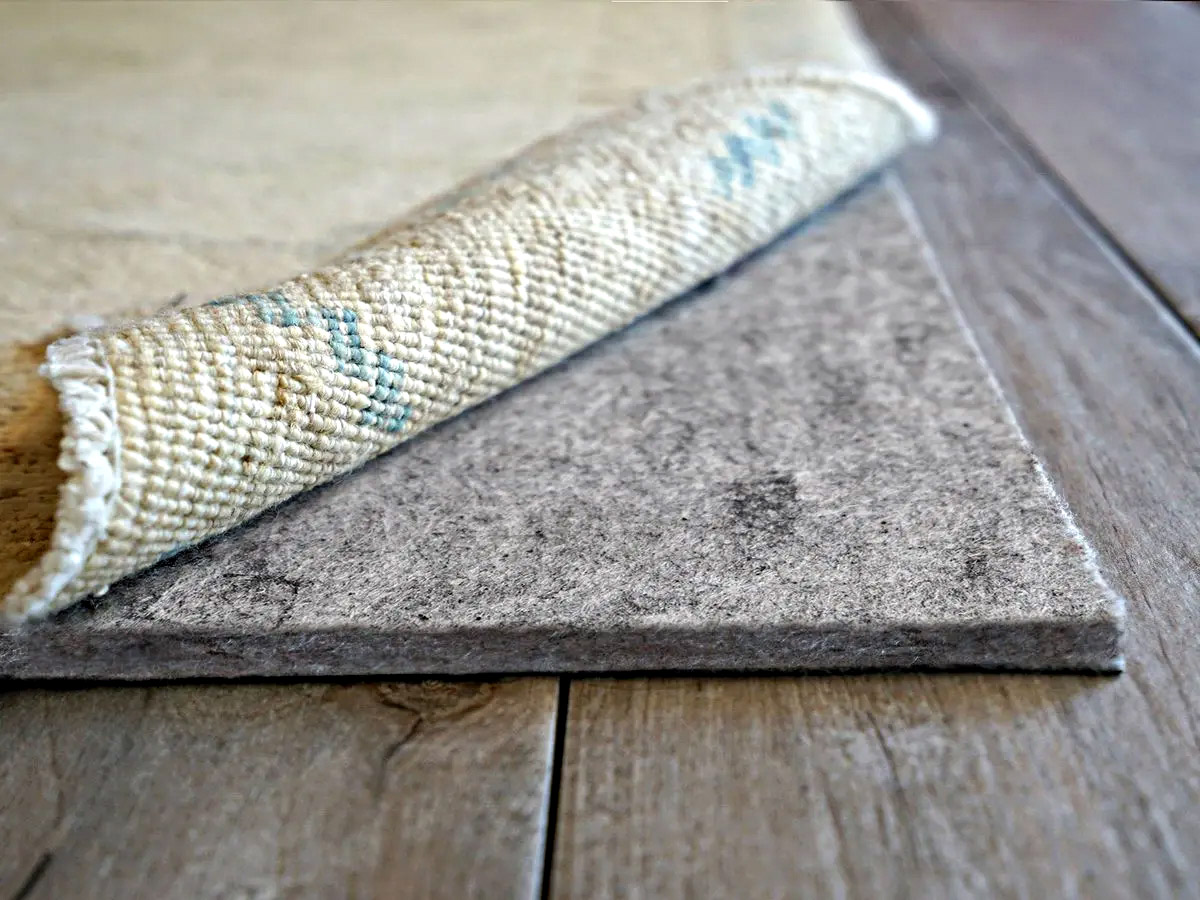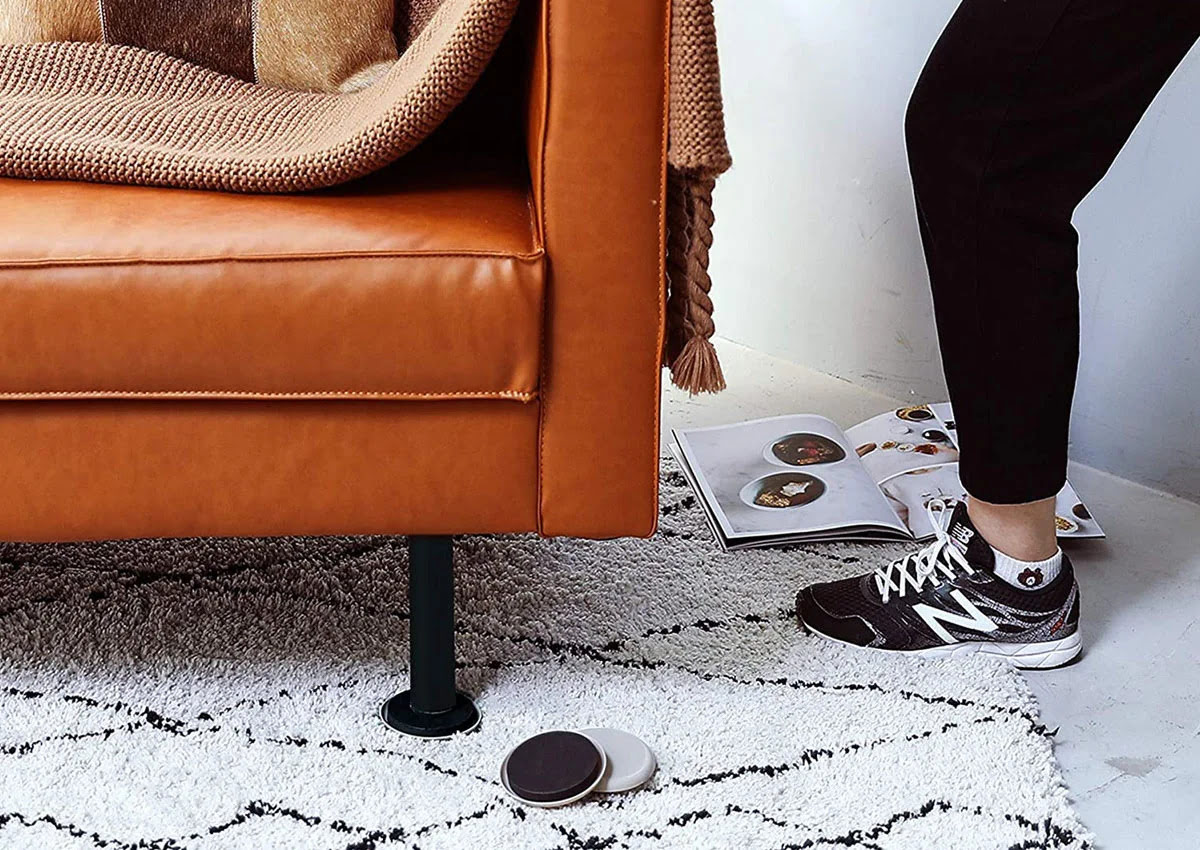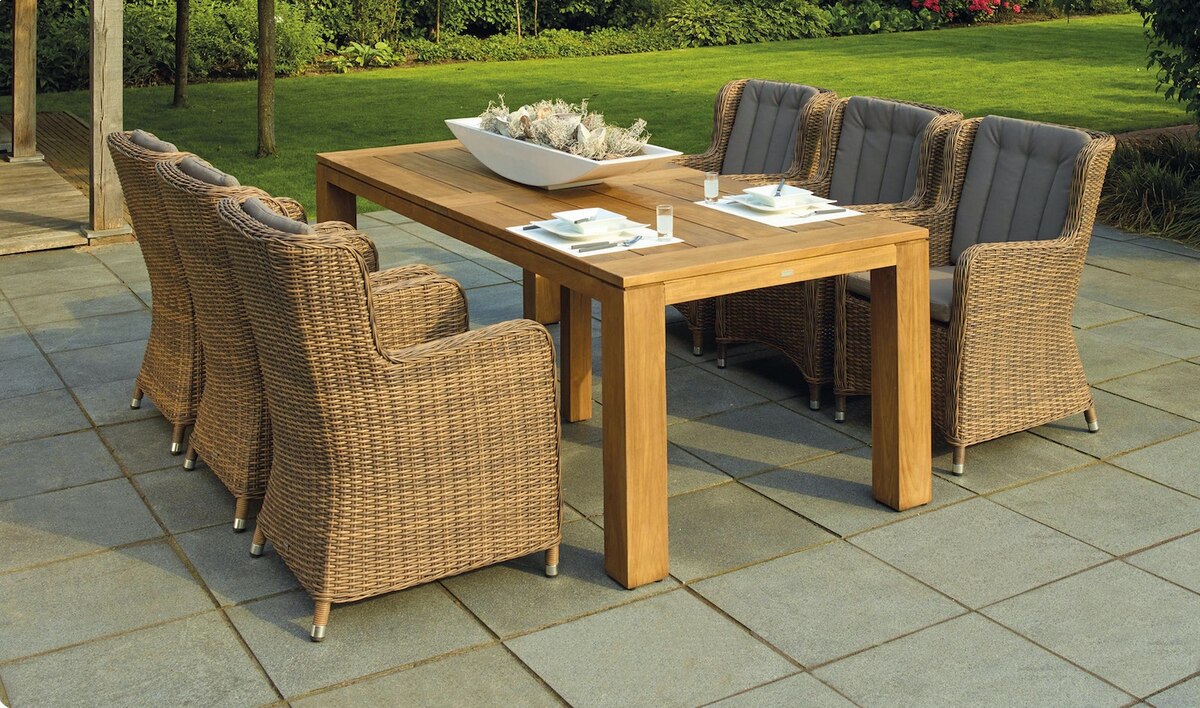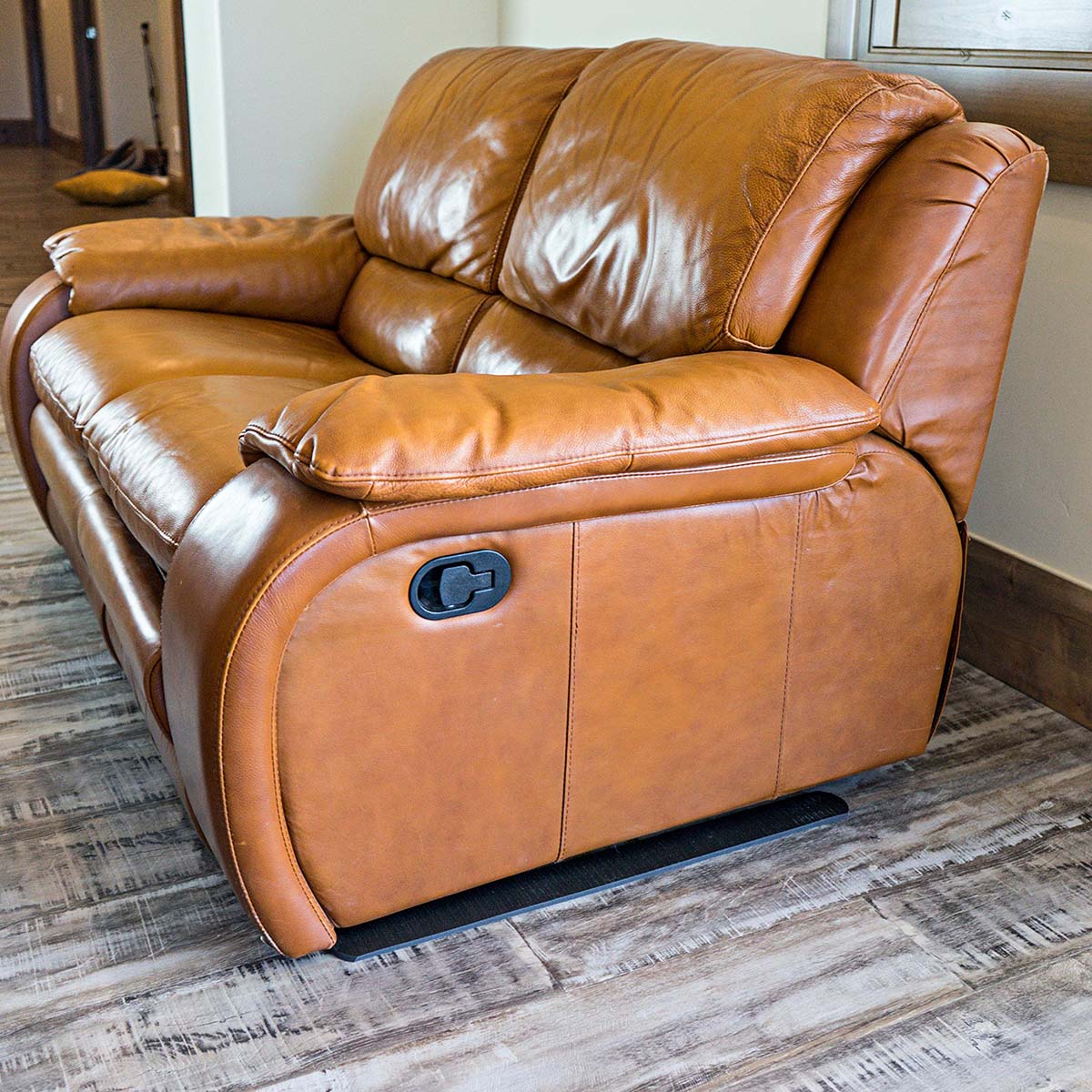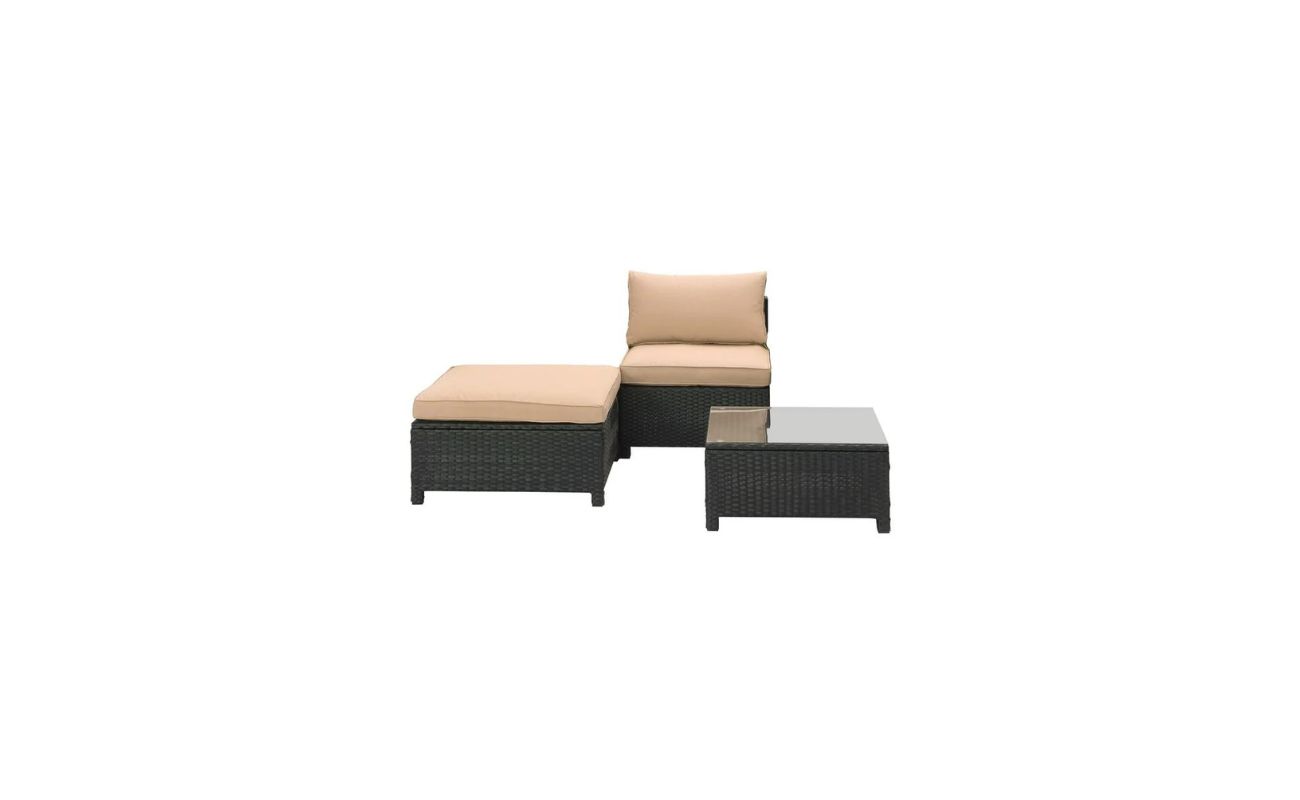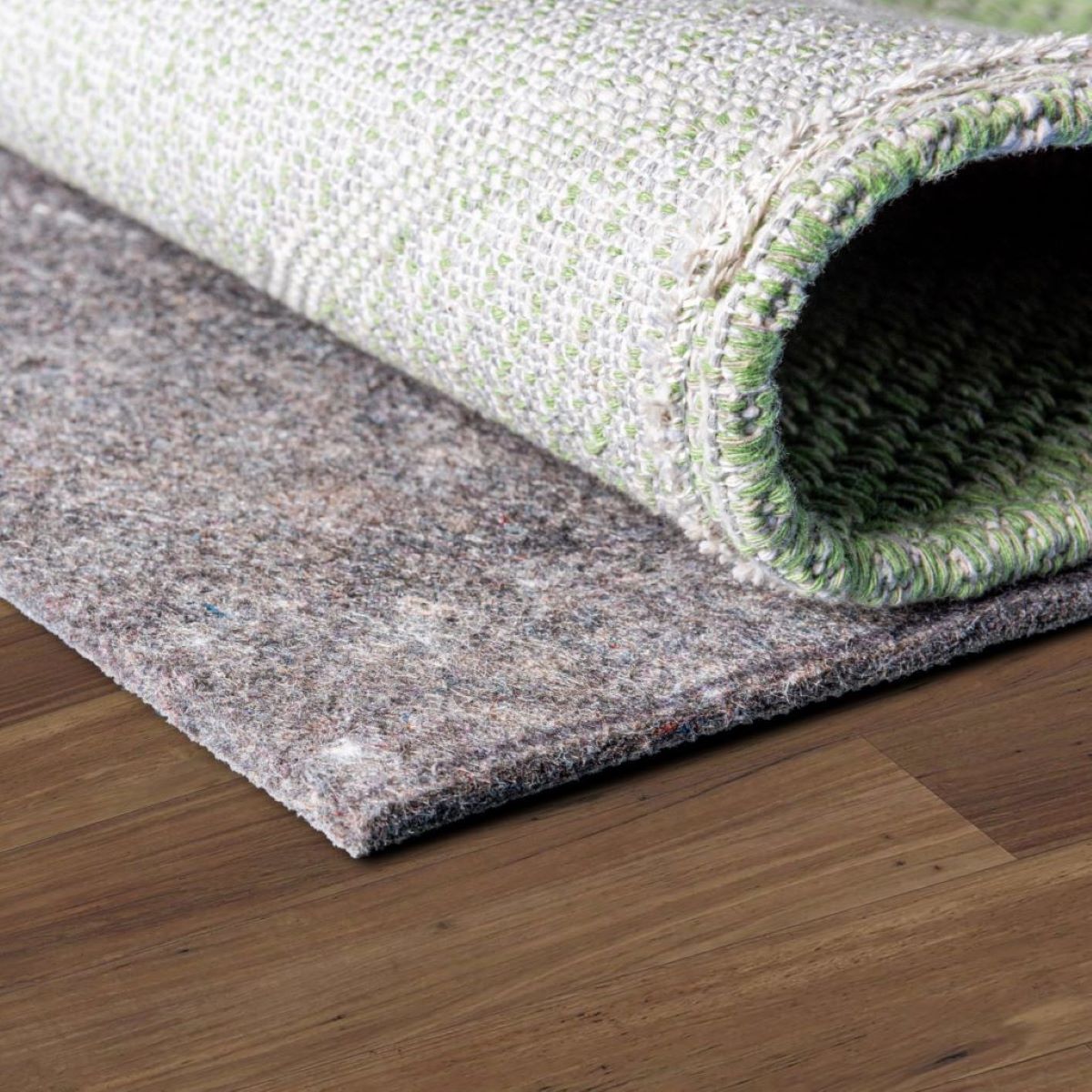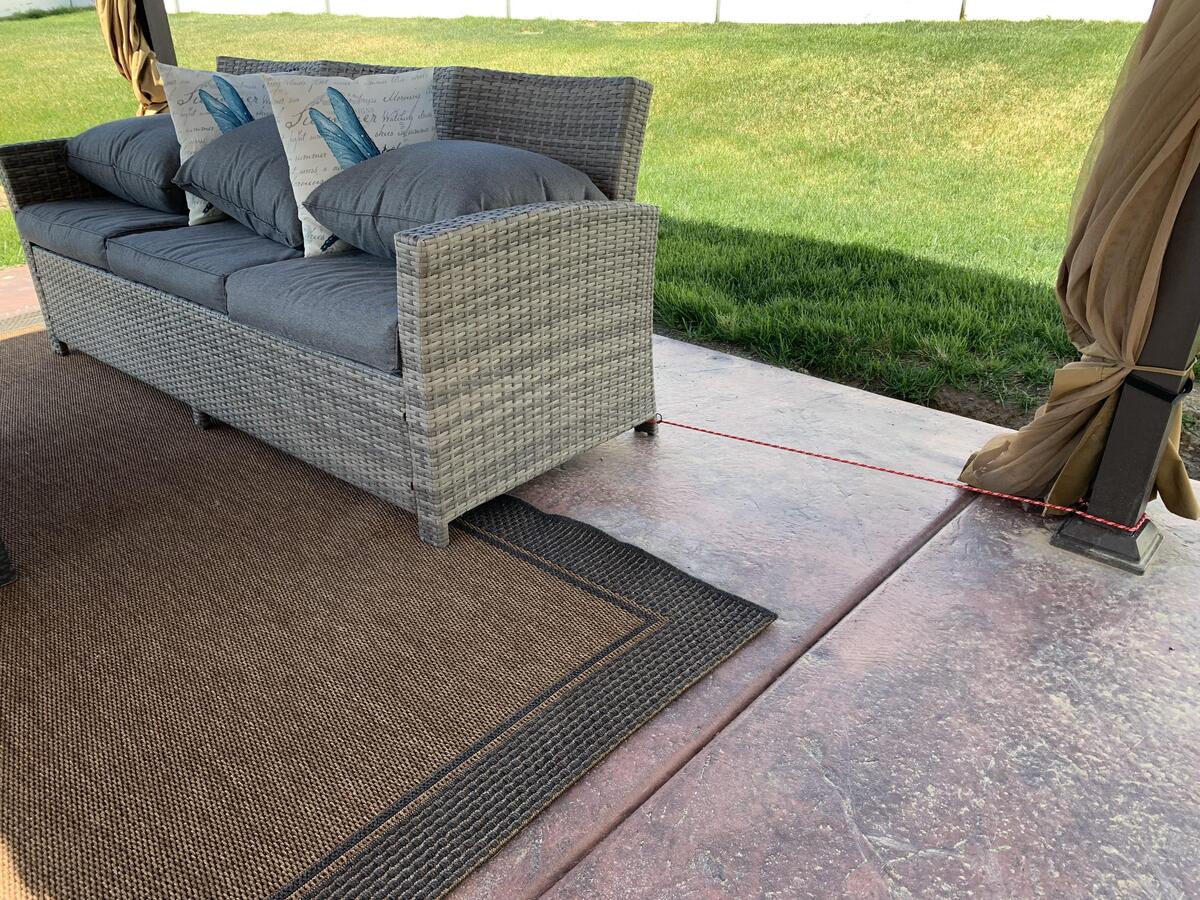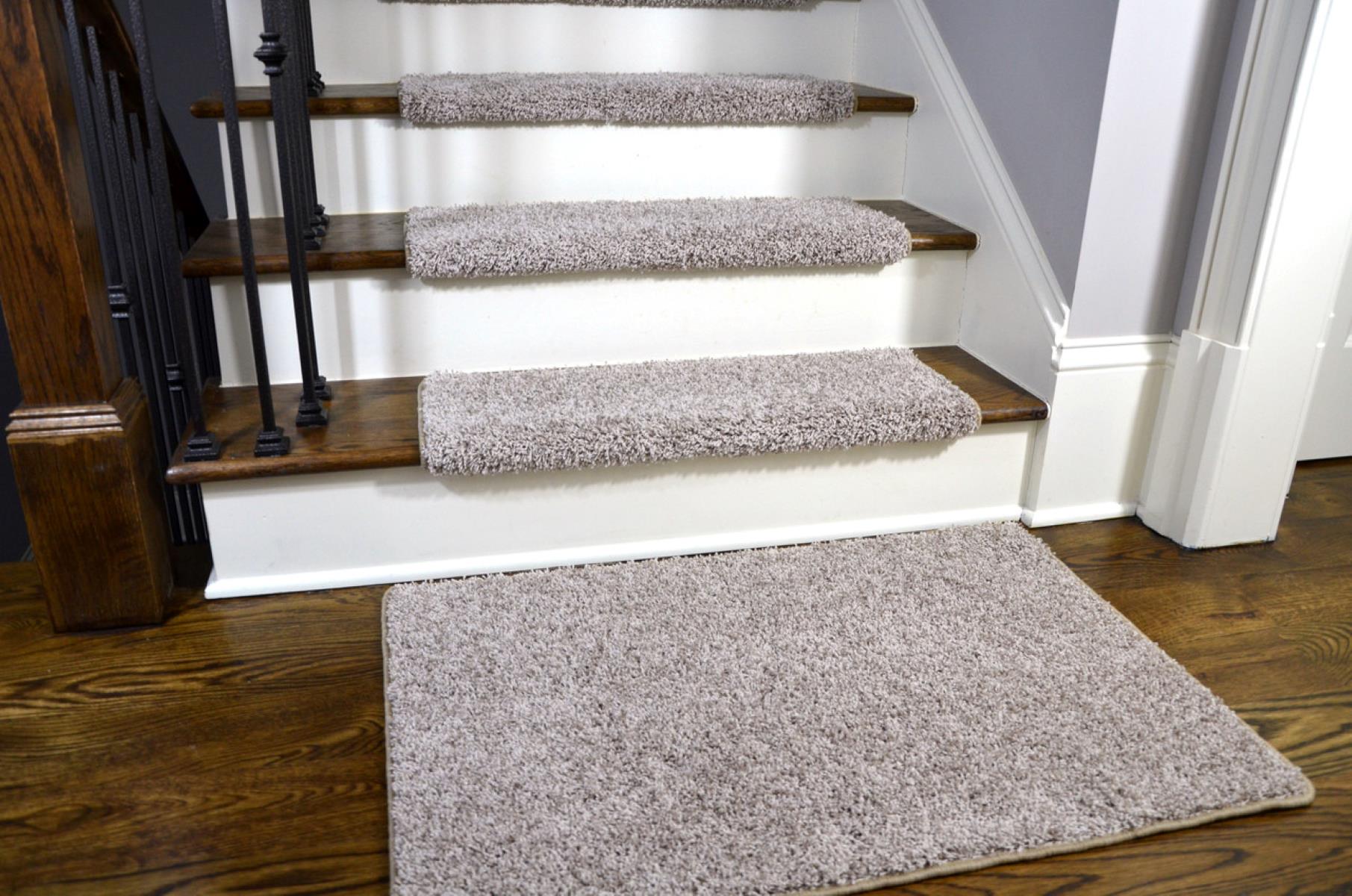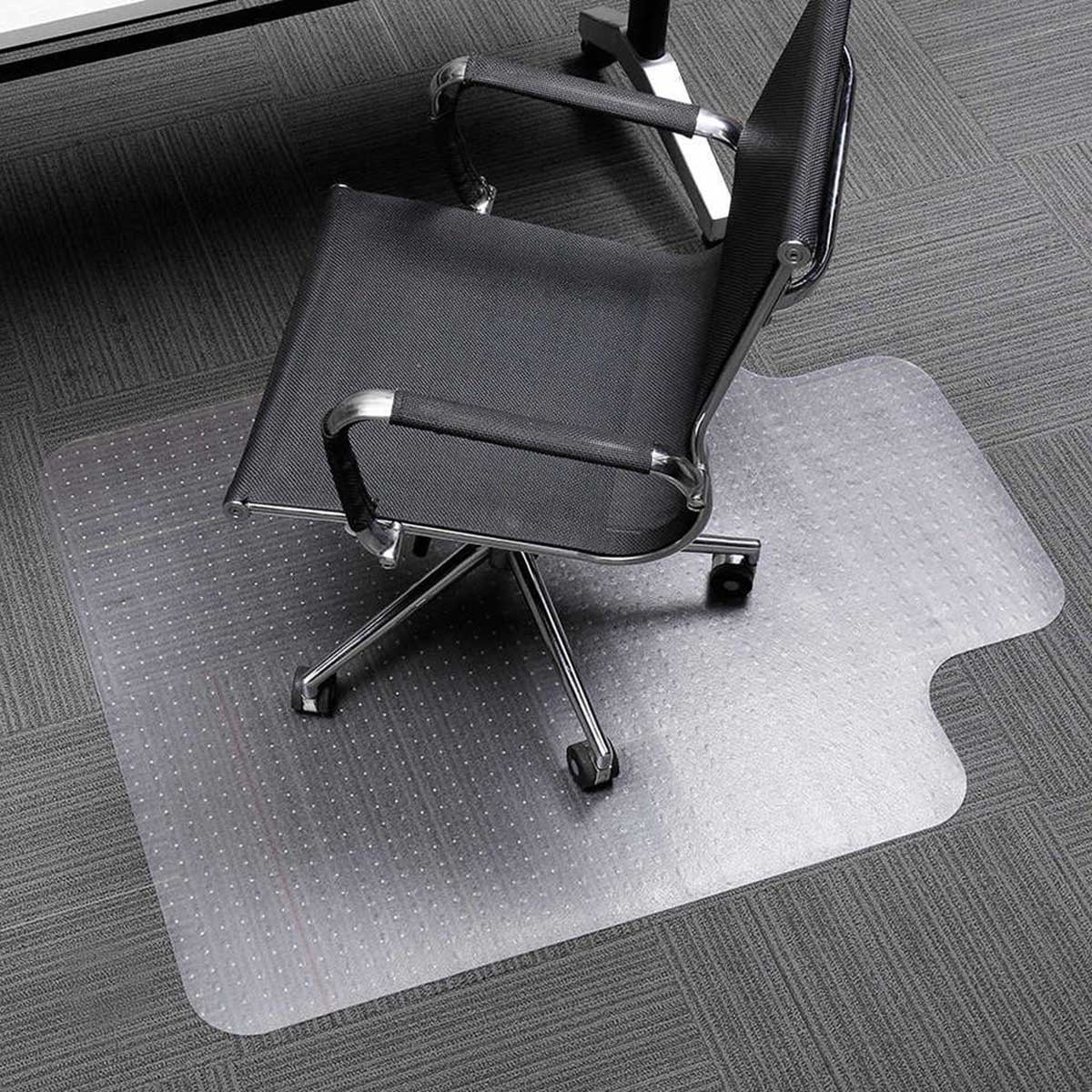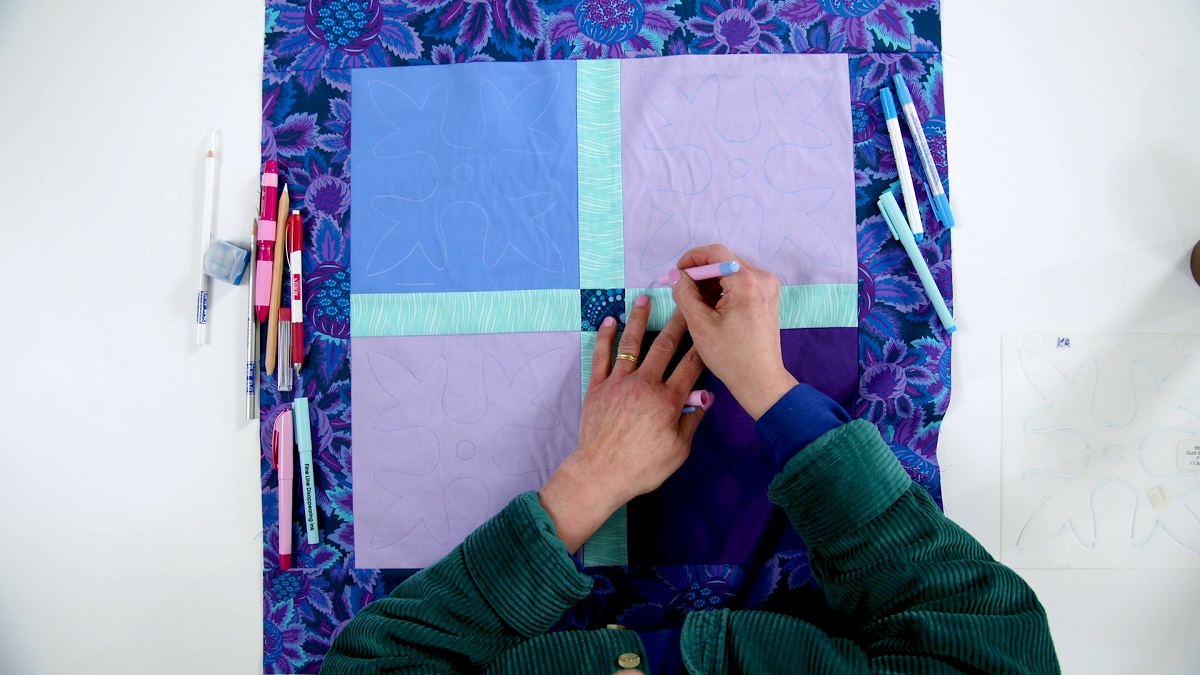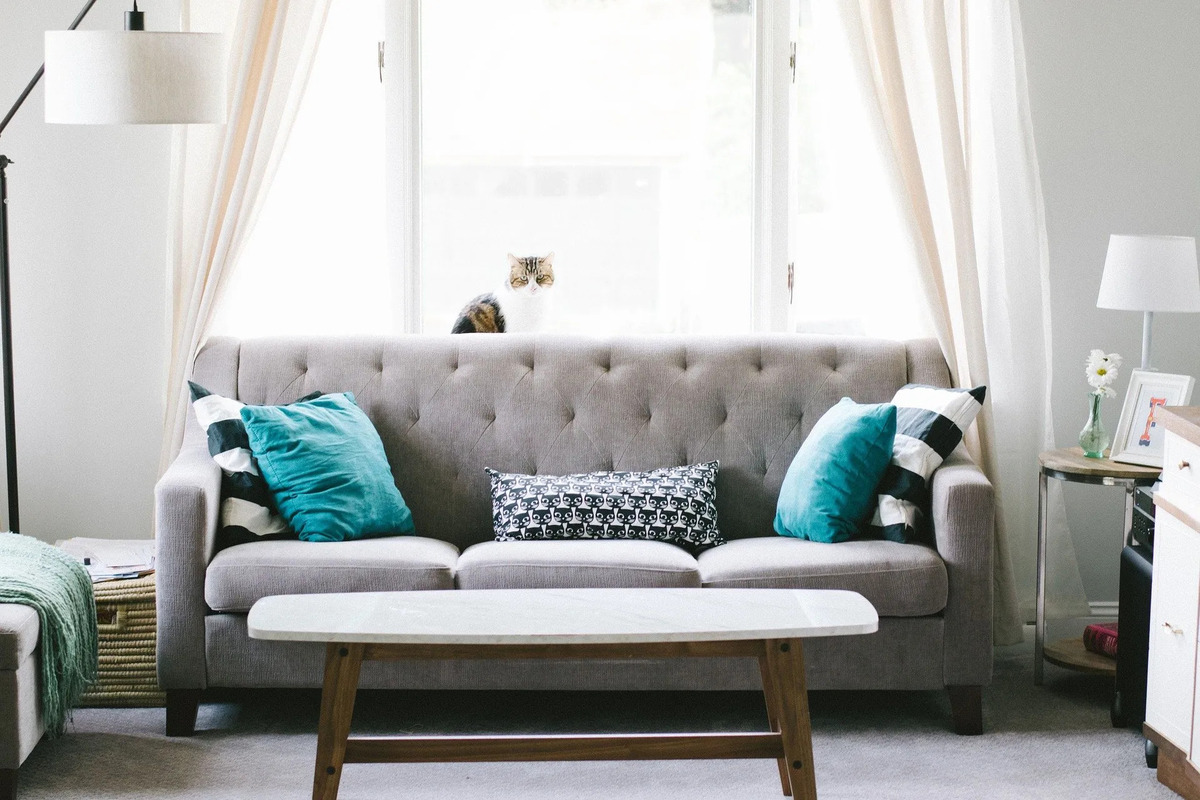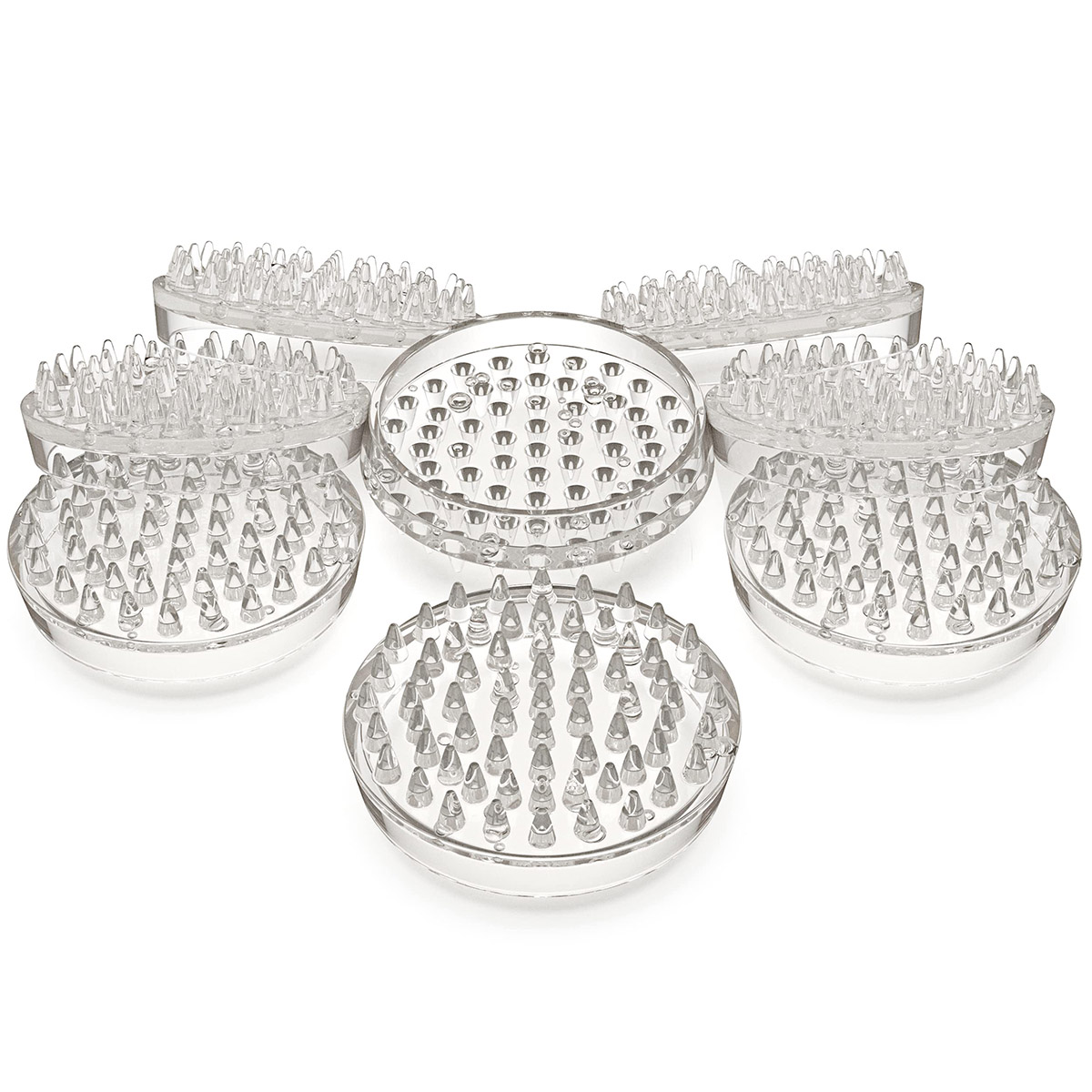

Articles
How To Prevent Furniture Marks On A Carpet
Modified: October 28, 2024
Learn how to prevent furniture marks on your carpet with these helpful articles.
(Many of the links in this article redirect to a specific reviewed product. Your purchase of these products through affiliate links helps to generate commission for Storables.com, at no extra cost. Learn more)
Introduction
When it comes to decorating and furnishing our homes, one of the key elements to consider is the type of flooring we have. Carpets are a popular choice for many homeowners due to their warmth, comfort, and aesthetic appeal. However, one common issue that can arise with carpeted floors is furniture marks. Those unsightly indentations on your carpet left by heavy chairs, tables, or furniture legs can be frustrating and challenging to remove.
Fortunately, there are several preventive measures you can take to protect your carpets from furniture marks. By understanding the causes of these marks and implementing the right strategies, you can keep your carpets looking pristine and extend their lifespan. In this article, we will explore the causes of furniture marks on carpets and provide practical tips on how to prevent them.
Key Takeaways:
- Choose furniture with wide, evenly-distributed legs and utilize furniture pads or glides to prevent unsightly marks on carpets. Lift and move furniture carefully to minimize damage and consider professional carpet cleaning for deep maintenance.
- Regularly rotate furniture, use area rugs or carpet protectors, and incorporate steam cleaning and vacuuming into your carpet care routine to prevent furniture marks. Professional carpet cleaning can provide deep and thorough maintenance, ensuring the longevity and appearance of your carpets.
Read more: How To Prevent Cat Scratching Furniture
Understanding the Causes of Furniture Marks on Carpets
Before we delve into prevention methods, it’s important to understand why furniture marks occur on carpets. These marks are primarily caused by the weight and pressure of the furniture bearing down on the carpet fibers. Over time, this constant pressure can cause the fibers to compress, leaving behind noticeable indentations.
Another factor that contributes to furniture marks is the type of carpet construction. Carpets with shorter and denser fibers are more prone to developing marks compared to carpets with longer and more resilient fibers. Additionally, the type of furniture plays a role. Heavier pieces, such as sofas and bookshelves, exert more pressure on the carpet than lightweight items like chairs.
Lastly, the duration of furniture placement also affects the likelihood of marks. Leaving furniture in the same spot for an extended period increases the chances of permanent indentation formation.
By understanding these causes, you can take proactive steps to prevent furniture marks and preserve the beauty of your carpeted floors.
Choosing the Right Furniture for Carpeted Floors
One of the most effective ways to prevent furniture marks on carpets is to choose the right furniture for your carpeted floors. Here are some tips to keep in mind:
- Opt for furniture with wide, evenly-distributed legs: Furniture with narrow or pointed legs can exert more pressure on the carpet, increasing the chances of marks. Look for pieces with wider legs that distribute weight more evenly.
- Consider furniture with wheels or casters: If possible, choose furniture that comes with wheels or casters. These can help reduce the friction and pressure on the carpet when moving the furniture around, minimizing the risk of marks.
- Avoid furniture with sharp edges or corners: Furniture with sharp edges or corners can dig into the carpet fibers, leaving behind visible marks. Opt for rounded or padded edges instead.
- Choose lightweight furniture: Whenever possible, choose lightweight furniture that will exert less pressure on the carpet. This is especially important for chairs and other frequently moved pieces of furniture.
By selecting furniture that is carpet-friendly, you can greatly reduce the chances of furniture marks and maintain the integrity of your carpets.
Using Furniture Pads or Glides
One of the most effective ways to prevent furniture marks on carpets is by using furniture pads or glides. These protective accessories act as a buffer between the furniture and the carpet, reducing the pressure and preventing indents. Here’s how you can use them:
- Furniture pads: These come in various forms, such as adhesive pads, felt pads, or rubber pads. Adhesive pads can be attached directly to the bottom of furniture legs, providing a cushioning effect. Felt pads are particularly effective for preventing marks on hardwood floors, but they also work well on carpets. Rubber pads offer more grip and stability, making them suitable for heavy furniture.
- Glider cups or sliders: Glider cups or sliders are placed under furniture legs to evenly distribute the weight and allow for smooth movement. These are particularly useful for furniture that needs to be moved frequently, such as chairs or tables. They come in different materials, including plastic, rubber, and Teflon, depending on the type of flooring and the weight of the furniture.
When using furniture pads or glides, ensure they are properly attached and in good condition to provide optimal protection. Regularly inspect and replace them as needed to maintain their effectiveness in preventing furniture marks.
By incorporating furniture pads or glides into your furniture setup, you can significantly reduce the chances of indents on your carpets and preserve their overall appearance.
Lift and Move Furniture Carefully
Another essential tip to prevent furniture marks on carpets is to lift and move furniture with caution. Improper handling and dragging can cause significant damage to the carpet fibers and result in unsightly marks. Follow these guidelines to ensure safe and careful furniture movement:
- Clear the area: Before moving any furniture, clear the surrounding area to create a clear path. Remove any small objects or obstacles that could potentially damage the carpet or cause accidents.
- Enlist assistance: For larger and heavier pieces of furniture, it’s best to have someone help you lift and move them. This reduces the risk of dropping or damaging the furniture and the carpet.
- Lift, don’t drag: Avoid dragging or sliding furniture across the carpet. This can cause friction and lead to indentations. Instead, lift the furniture slightly off the ground using proper lifting techniques, such as bending at the knees and using your leg muscles.
- Use furniture sliders: If lifting heavy furniture is not feasible, consider using furniture sliders. These allow you to easily glide the furniture across the carpet without applying direct pressure.
By practicing careful furniture lifting and movement techniques, you can minimize the risk of furniture marks and maintain the integrity of your carpets.
Place furniture coasters or felt pads under the legs of heavy furniture to prevent them from leaving marks on the carpet. Regularly check and replace these pads as needed.
Read more: How To Prevent Mold On A Wet Carpet
Regularly Rotate Furniture
Rotating your furniture is not only a great way to refresh the look of your space, but it also helps prevent furniture marks on your carpets. Over time, the weight of furniture can cause permanent indentations, especially if it remains in the same position for extended periods. By regularly rotating your furniture, you distribute the weight more evenly and reduce the likelihood of marks. Here are some tips for effective furniture rotation:
- Plan a rotation schedule: Create a schedule to rotate your furniture every few months. This ensures that each piece of furniture has an opportunity to rest on different areas of the carpet.
- Change the arrangement: When rotating, consider rearranging the layout of your room. This not only prevents furniture marks but also offers a fresh and new aesthetic.
- Involve all furniture: Don’t just focus on heavy pieces of furniture; make sure to include all items, including chairs, tables, and smaller accessories.
- Take precautions during rotation: When moving furniture during rotation, follow the lifting and moving guidelines mentioned earlier to avoid any damage or marks.
Regularly rotating your furniture not only prevents marks but also helps in equal wear and tear on your carpet. It’s a simple practice that can make a significant difference in preserving the overall appearance of your carpeted floors.
Utilizing Area Rugs or Carpet Protectors
Another effective solution for preventing furniture marks on carpets is to utilize area rugs or carpet protectors. These additional layers of protection create a barrier between your furniture and the carpet, reducing the risk of indentations. Here’s how you can make the most of area rugs and carpet protectors:
- Strategic placement: Place area rugs under heavy furniture to distribute the weight and minimize the pressure on the carpet. This is especially useful for larger pieces like sofas, beds, or dining tables.
- Size and material consideration: Choose area rugs that are large enough to accommodate the furniture while ensuring all legs are on the rug. Additionally, opt for rugs made from non-slip materials to prevent them from shifting or sliding.
- Carpet protectors: Consider using carpet protectors specifically designed to prevent furniture marks. These can be placed directly under furniture legs or attachable pads that cover the entire leg. They provide an extra layer of cushioning and distribute the weight more evenly.
- Regular maintenance: Clean and vacuum the area rugs and carpet protectors regularly to prevent any dirt or debris from accumulating underneath. This will help maintain the effectiveness of the protection and prevent any potential damage to the carpet.
By utilizing area rugs or carpet protectors strategically, you can add an extra layer of defense against furniture marks and protect the integrity of your carpets.
Steam Cleaning and Vacuuming Carpets
Regular cleaning of your carpets is essential not only for maintaining their appearance but also for preventing furniture marks. A clean and well-maintained carpet is more resilient and less prone to permanent indentations. Here are two key cleaning methods to incorporate into your carpet care routine:
- Steam cleaning: Steam cleaning is an effective method to deep clean carpets and restore their texture. This process involves using a steam cleaner to remove dirt, stains, and debris from deep within the carpet fibers. By regularly steam cleaning your carpets, you can keep them fluffy and resilient, making them more resistant to furniture marks.
- Vacuuming: Regular vacuuming is crucial for maintaining the cleanliness and longevity of your carpets. It helps remove loose dirt, dust, and debris that can accumulate and cause premature wear. When vacuuming, pay extra attention to the areas where furniture legs are placed to minimize the chances of dirt particles causing indentations.
When steam cleaning or vacuuming, keep the following tips in mind:
- Follow manufacturer instructions: Read the instructions on your steam cleaner and vacuum cleaner to ensure you are using them correctly and effectively.
- Be gentle: Avoid forcefully pushing or pulling the steam cleaner or vacuum over the carpet, as this can potentially damage the fibers. Instead, use gentle and steady movements for the best results.
- Set a regular cleaning schedule: Establish a routine for steam cleaning and vacuuming your carpets to keep them in optimal condition. The frequency may depend on foot traffic and overall carpet maintenance needs.
By incorporating steam cleaning and regular vacuuming into your carpet care routine, you can maintain the integrity of your carpets and minimize the appearance of furniture marks.
Professional Carpet Cleaning
While regular cleaning is important for preventing furniture marks on carpets, there are times when a deep and thorough cleaning by professionals is necessary. Professional carpet cleaning services utilize specialized equipment and techniques to eliminate tough stains, dirt, and allergens that regular cleaning may not fully remove. Here’s why professional carpet cleaning can help prevent furniture marks:
- Deep cleaning: Professional carpet cleaners have the expertise and equipment to penetrate deep into the carpet fibers, removing embedded dirt and debris. This thorough cleaning helps restore the carpet’s texture and resilience, making it less susceptible to furniture marks.
- Stain removal: Stubborn stains caused by spills or accidents can contribute to furniture marks on carpets. Professional cleaners can effectively treat and remove these stains, reducing the chances of permanent damage and marks.
- Professional expertise: Carpet cleaning professionals are trained to assess the condition of your carpets and choose the appropriate cleaning methods. They can tailor their approach based on the type of carpet and the presence of furniture marks, ensuring the best possible results.
- Regular maintenance program: Professional carpet cleaners can also offer a regular maintenance program that includes scheduled cleanings. This proactive approach helps keep your carpets in optimal condition, preventing the accumulation of dirt and minimizing furniture marks.
It’s recommended to schedule professional carpet cleanings at least once or twice a year, depending on the amount of foot traffic and the condition of your carpets. By investing in professional cleaning, you can ensure the longevity and appearance of your carpets, reducing the risk of furniture marks.
Conclusion
Preventing furniture marks on carpets requires a combination of proactive measures and regular maintenance. By understanding the causes of furniture marks and implementing the right strategies, you can keep your carpets looking pristine and extend their lifespan.
Choosing the right furniture for carpeted floors is the first step in preventing marks. Opt for furniture with wide, evenly-distributed legs and consider using furniture pads or glides for added protection. Lift and move furniture carefully, avoiding dragging or sliding.
Regularly rotating furniture helps distribute weight more evenly and reduces the risk of permanent indentations. Utilizing area rugs or carpet protectors adds an extra layer of defense, while steam cleaning and vacuuming help maintain the resilience of your carpets.
For a deep and thorough cleaning, enlist the services of professional carpet cleaners. They have the expertise, specialized equipment, and techniques to remove deep-seated dirt and stains, reducing the chances of furniture marks.
By incorporating these preventive measures into your carpet care routine, you can enjoy beautiful and mark-free carpets for years to come. Remember to regularly assess the condition of your carpets and take proactive steps to address any signs of wear or damage.
With proper care and attention, your carpets can remain a cozy and inviting foundation for your home’s decor, free from the unsightly marks caused by furniture.
Frequently Asked Questions about How To Prevent Furniture Marks On A Carpet
Was this page helpful?
At Storables.com, we guarantee accurate and reliable information. Our content, validated by Expert Board Contributors, is crafted following stringent Editorial Policies. We're committed to providing you with well-researched, expert-backed insights for all your informational needs.
